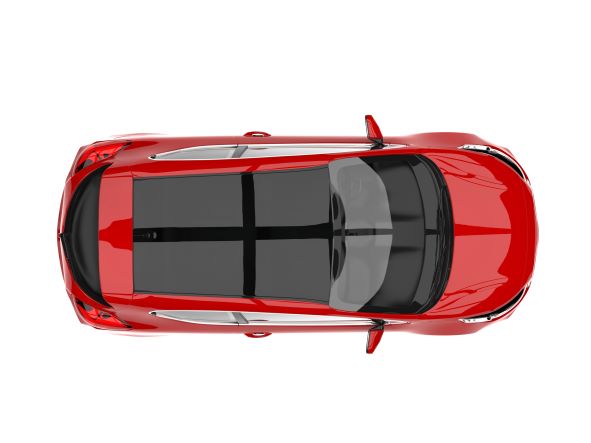The Mystery Behind Birds-Eye Views, Finally Explained

How exactly are 360° bird's eye camera views made?
No, there’s not a downward-facing camera hanging from a 20-foot pole attached to the top of cars with a 360° system.
There’s neither a drone always hovering above your vehicle, nor a satellite tracking you from 12,000 miles up. So exactly how is the monitor on your dash getting that perfect vehicle overview?
Though every other new make and model vehicle is being released with a 360 camera, from the Camry to the Silverado, it’s probably not clear to the average person how those signature birds-eye images are actually produced.
It’s a little bit of magic really--computer-imaging magic to be exact!
Secret Revealed
It all starts with the 4 (or 6, depending on the system and brand) cameras that are perfectly positioned to capture front, rear, and side exterior angles. After these usually wide-angle cameras capture the views, the images are stitched together by an image processing system the same way a panorama photo would be--except this is uniquely angled to surround a centered vehicle.
The ending results: a lifelike, yet synthetic, top-down composite view of your surroundings that enables parallel parking with ease, reduces blind spots, and makes the little ones wonder where the camera floating on top of your vehicle is!
Naturally, these systems require a bit of calibration when setting up, as any fancy piece of machinery like this requires proper positioning before usage (fear not, our solutions are made so that even the least technically sound person can easily auto-calibrate)!
Who's best served by these types of systems?
Commercial vehicles with large blind spots are the best candidates for these 360° systems--just imagine a large step van with a divider behind the cab, obstructing what would normally be the vehicle's rear views. There's practically no visibility asides from a driver and passenger side window!
For vehicles that fit the bill, look no further than the RVS InView 360° Camera System lineup, with recording and non-recording options, super-fast calibration, different price points for different budgets, and product updates that make the next iteration of each system even more streamlined, efficient, and cost-effective (like our monitor-only 360 system coming soon!). Adding our compatible sensors is just icing on the cake here!
- Webinar - Rear View Safety (1)
- Sensors (1)
- 360 Systems (10)
- Artificial Intelligence (7)
- Innovative Tech (7)
- Fleet Solutions (25)
- Driver Fatigue (0)
- Dash cams (11)
- Backup Cameras (12)
- Safety Stats (39)
- Mobile DVR (12)
- Tyler's Take (5)
- Backup alarm - Rear View Safety (0)
- Wireless- Rear View Safety (1)
- Thank You - Rear View Safety (0)
- News (465)
- Thanksgiving Travel Tips - Rear View Safety (0)
- Zipcar - Rear View Safety (0)
- Car Culture - Rear View Safety (5)
- Car Accident - Rear View Safety (3)
- Safety Community (111)
- FAQ / Ask The Expert (29)
- Testimonials (11)
- Safety Guides (97)
- Road Safety Resources & Links (53)
- Upcoming Events (6)
- Safety Through Infographics (24)
- News Releases (193)
- Featured Stories (301)































How about telling us how Chevy makes a trailer disappear when backing up?
And tell us if you carry an aftermarket product like ti.